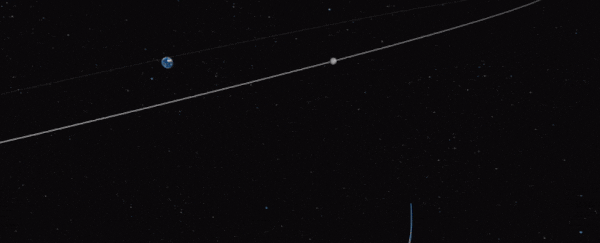An orbit has now been decided for the first permanent lunar outpost. When the lunar Gateway space station gets into position around the Moon, it will be in a highly eccentric "halo" orbit, perpendicular to Earth.
This particular type of orbit is called a near rectilinear halo orbit (NRHO). It helps minimise the use of fuel, while optimising access to the lunar surface.
The placement of this future outpost is very different from the Apollo program's low lunar parking orbit of 110 kilometres (69 miles) around the Moon's equator.
The lunar Gateway orbit zooms in to a distance of 3,000 kilometres (1,864 miles) at its closest approach, before swooping out as much as 70,000 kilometres (43,496 miles) at its farthest, looping around the Moon's poles.
The lunar Gateway is going to be there for, hopefully, a very long time. It will serve as a communications relay, and will have an on-board laboratory for science operations, just like the International Space Station.
And it will serve as a staging post for Moon missions, where astronauts can dock, leave their spaceship behind, and travel down to the lunar surface in a lander, to avoid the complicated manoeuvres and braking required to land directly on the Moon.
"In human spaceflight we don't fly one single, monolithic spacecraft," said mission analyst Florian Renk of the European Space Agency's Operations Centre (ESOC) Flight Dynamics Division.
"Instead we fly bits and pieces, putting parts together in space and soon on the surface of the Moon. Some parts we leave behind, some we bring back - the structures are forever evolving."
Unlike the low lunar orbit, an NRHO leverages Lagrange points for stability - these are points where the combined gravitational forces of two larger bodies (in this case Earth and the Moon) create a small area of gravitational stability, or near-stability.
While the Gateway's NRHO isn't itself in a Lagrange point, it is in the halo family of one.
 (Davis et al., 2017/ai solutions/NASA Johnson)
(Davis et al., 2017/ai solutions/NASA Johnson)
This means it is slightly unstable, and will drift away if the orbit isn't occasionally corrected. So the Gateway will need to conduct regular small manoeuvres to stay in position.
But this minor issue is compensated by the minimal fuel it will take incoming spacecraft to reach the station. And, by extending the orbital period to seven days, the Gateway will experience minimal eclipses - periods when it's in Earth's shadow. This choice was deliberate, as the station is going to run on solar power; the more Sun it gets, the better.
This seven-day orbit means the station will also make its closest approach to the Moon every seven days.
So, there will be a weekly transfer window for supplies, robots, infrastructure and astronauts. Since NASA is intending to send astronauts to the surface for seven-day blocks during the Artemis mission, this works out pretty perfectly.
Put your hand up if you desperately want to go.
